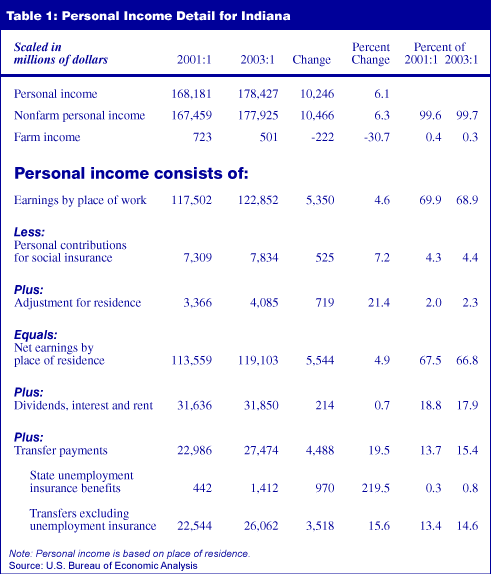Indiana's Personal Income Continues to Grow, But…
The federal government releases estimates of personal income each quarter for the 50 states, the District of Columbia and the nation as a whole. Recent first-quarter estimates for 2003 show an increase of 1.1 percent for Indiana over the fourth quarter of 2002, compared to 0.9 percent for the U.S. during the same period (see Figure 1). These estimates show continued growth in Indiana's total personal income and percentage increases larger than the U.S. (see Figure 2).


A somewhat longer view, between the first quarters of 2001 and 2003, shows a 6.1 percent overall increase in Indiana's personal income. Personal income is derived from work earnings; other labor income (such as employer payments into pension plans, health and life insurance and unemployment insurance funds); dividends, rent and interest; and transfer payments (such as social security, disability or welfare).
Transfer payments, specifically state unemployment insurance, had the largest percentage increase (219 percent) between the first quarters of 2001 and 2003 (see Table 1). In pure dollar terms, transfer payments increased by $4.5 billion between 2001 and 2003, increasing its overall share of the state's personal income from 13.7 percent to 15.4 percent. Earnings from work increased by $5.4 billion over that same period of time, but declined by 1 percent in its share of overall personal income for the state.

This is a trend analyzed by economist Morton Marcus in the Spring 2002 issue of the Indiana Business Review and bears reading to clearly understand the long-term trends at play in Indiana’s personal income.
While we plan to incorporate quarterly personal income statistics into STATS Indiana later this year, data-hungry readers can find more information at www.bea.gov.
Carol O. Rogers
Associate Director, Indiana Business Research Center,
Kelley School of Business, Indiana University
